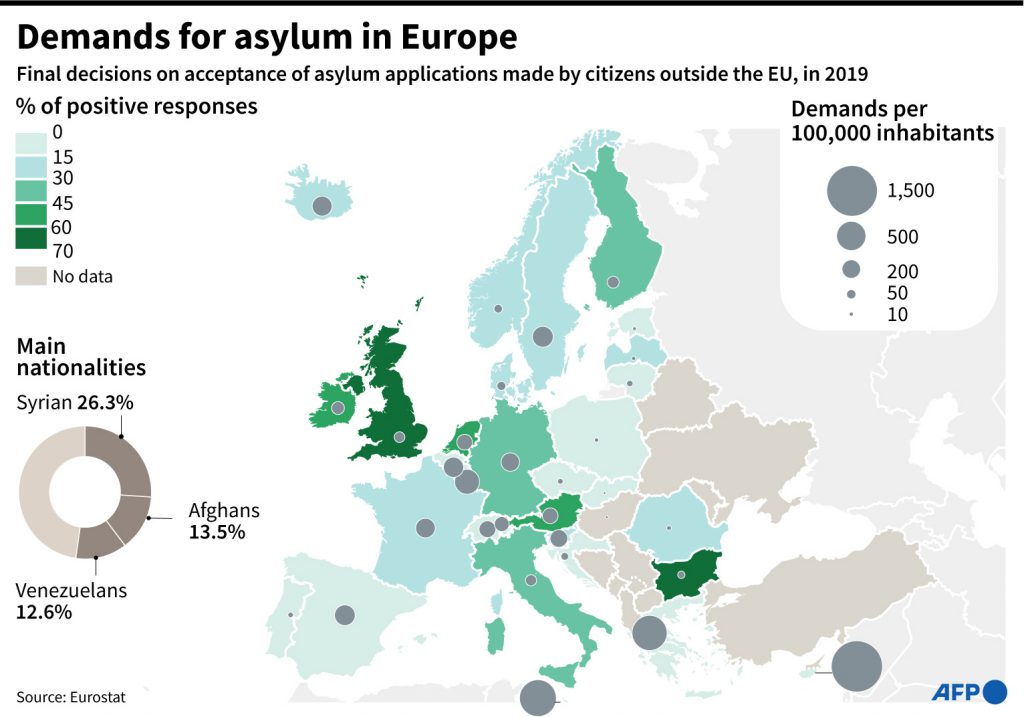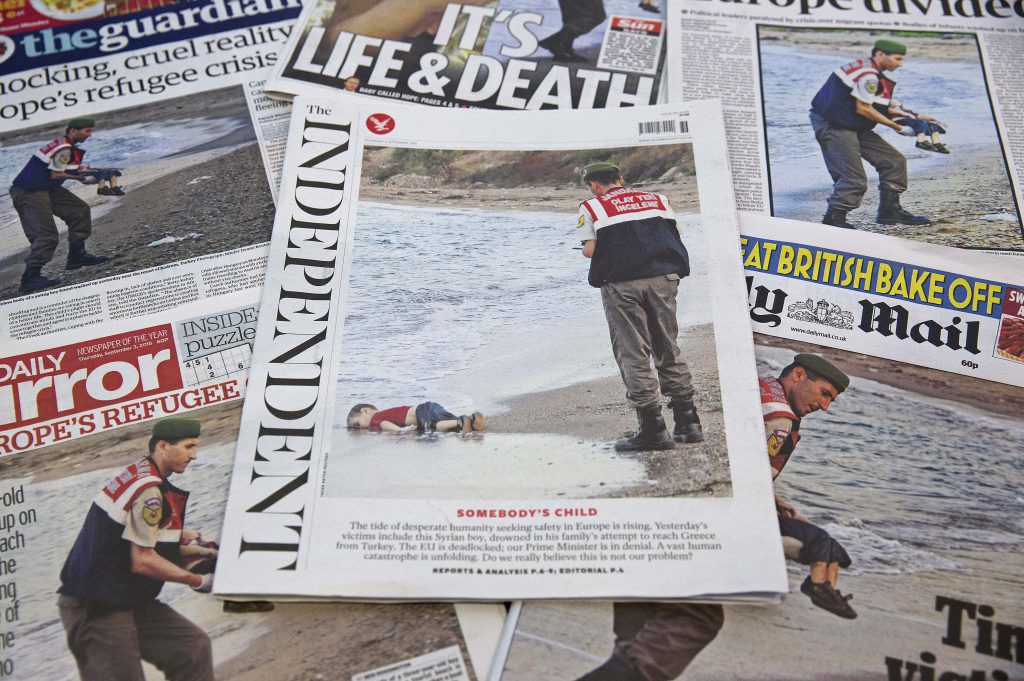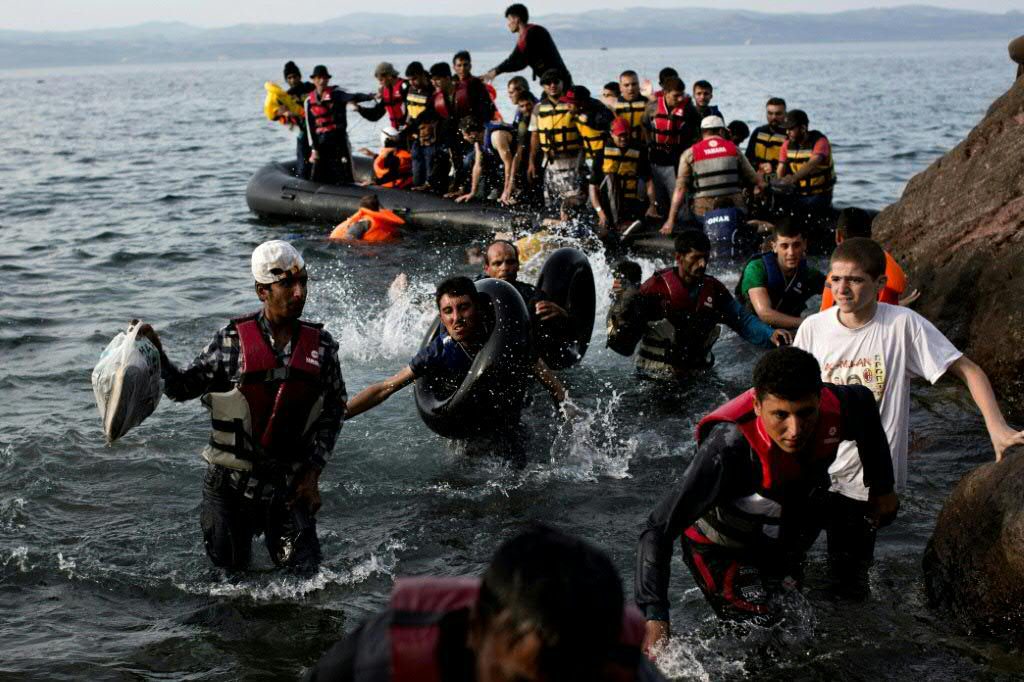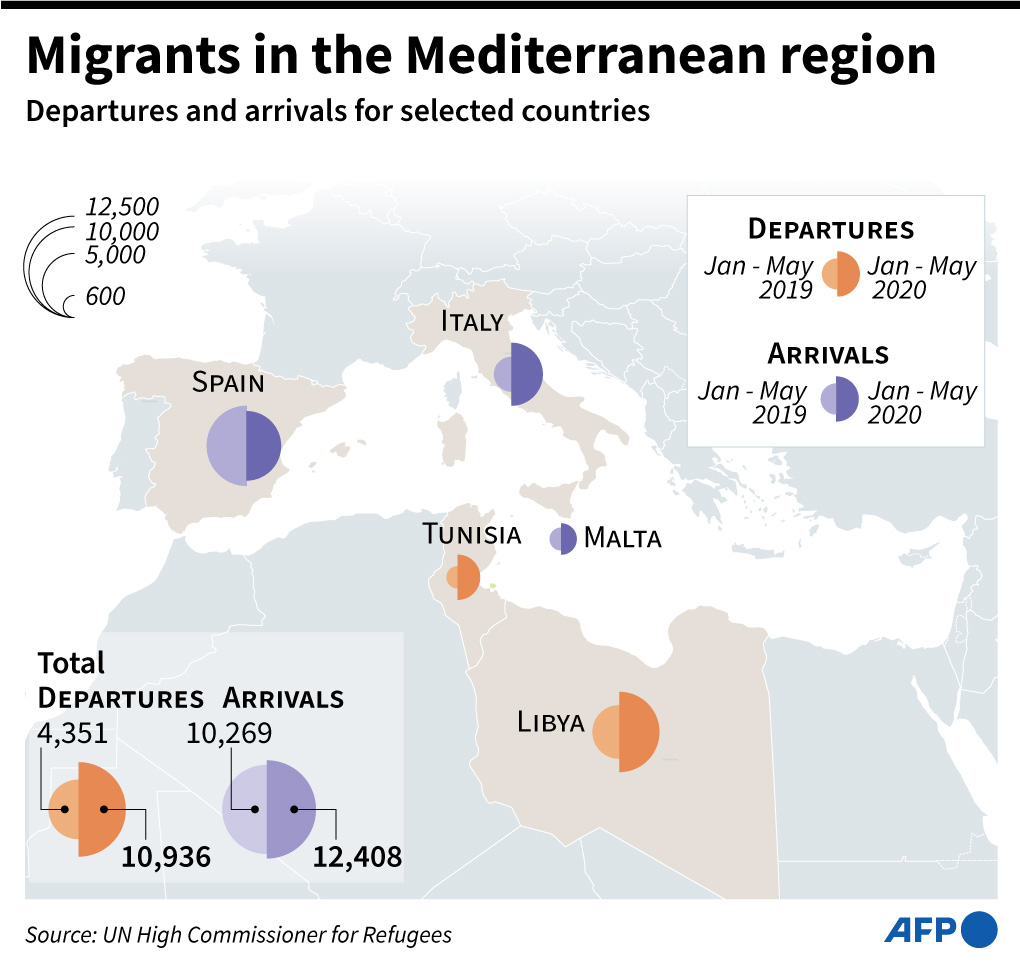Europe still mired in division after migrant crisis

Since taking in more than a million people fleeing war and poverty in 2015, Europe has stepped up border controls but still falls short on common migration and asylum policies.
At the time, the migrant crisis “laid bare Europe’s structural flaws and political divisions,” said Marie De Somer, a migration specialist at the European Policy Centre.
Until 2015, the Dublin regulation had called for the first EU country where asylum seekers arrived to deal with their applications.
But the system “completely exploded” under the pressure that year, De Somer said.

Early on, images of columns of migrants trekking across Europe and the body of three-year-old Syrian boy Aylan Kurdi washed up on a Greek beach sparked sympathy.
German Chancellor Angela Merkel set aside the rules in summer 2015 to allow 900,000 mostly Syrian asylum seekers in — soon followed by countries with less experience of mass arrivals like Austria and Sweden.
READ ALSO – EU agency: Central Med migrant crossings more than doubled in July
Tightening the net
But a “quota” system to redistribute migrants among EU member countries, hastily cobbled together at Germany’s request, never moved the 160,000 people originally agreed on.
Initial openness to the newcomers foundered on the opposition of central European countries led by Viktor Orban’s Hungary — as well as a surge in support for anti-immigration populist parties in western Europe.

For lack of agreement, the Schengen free-movement zone was “significantly weakened, with controls reinstated on several frontiers” between members, a senior French official familiar with migration policy said on condition of anonymity.
Some migrants fell through gaps in the legal system, wandering from one EU country to another filing new asylum claims as previous ones were rejected.
Meanwhile national governments tightened their own laws piecemeal, limiting refuge rights or raising the bar for granting asylum.
Paris “above all tried to speed up processing of requests to quickly reject the ones without merit,” the French official said.
But informal refugee camps in the capital and northern port city Calais are now growing again — despite authorities doubling the number of places in state accommodation over five years.

“We have to stop this question from being a thorn in Europe’s side,” the official said. “We’re no longer in crisis and we should be able to manage today’s arrivals.”
Last year 612,000 people made initial asylum requests in Europe, according to statistics authority Eurostat — around half the numbers seen in 2015-16.
READ ALSO – Turkey’s bid to become maritime powerhouse unsettles Mediterranean
Leverage over Europe
But the decline in arrivals was bought with “agreements with non-EU countries at a significant cost for European values, and put the EU in a weak position,” said Matthieu Tardis at the French Institute of International Relations (IFRI).
An EU-Turkey deal struck in 2016 calls for Ankara to accept the return of migrants arriving in Greece, in exchange especially for financial aid.

But it cemented “terrible health conditions” in migrant camps in Greece and “became a lever” for President Recep Tayyip Erdogan to exert pressure on Europe, Tardis said.
Erdogan flexed his muscles earlier this year by declaring his borders open, prompting tens of thousands of people to head for the Greek frontier.
Elsewhere in the Mediterranean, the EU has backed a controversial agreement for Italy to finance and train the coastguard in Libya, torn by anarchy and civil war since 2011.
The EU “has notched up very few successes beyond beefing up Frontex,” said the European Policy Centre’s De Somer.
By 2027, the Brussels agency is supposed to number 10,000 border and coast guards who can be sent to buttress struggling member states.

But the Commission is also due to propose yet another mechanism for European asylum cooperation this September.
In July, Germany suggested the plan should include more preliminary triage of asylum seekers at the EU’s external borders and call for Frontex to deport those whose applications are denied.
Berlin also hopes for a scheme to relocate migrants rescued at sea among roughly a dozen willing member countries, while those who refuse to take them in could contribute financial aid.
Even that compromise would not plug all the holes in the European system.
“There can’t be a common European policy without common criteria for accepting asylum requests,” said Didier Leschi, head of France’s immigration and integration authority.
Source: ednHUB / Agence France-Presse